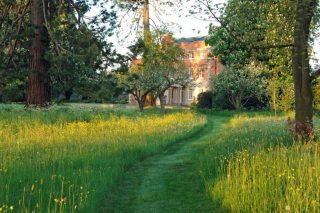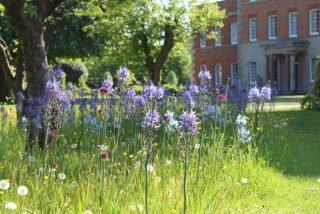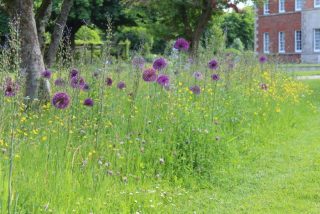Extending the Bulb Display in the Parkland Meadow
Being guardians of an ancient bulb meadow is no mean feat as it requires incessant attention to ensure that the grass is managed in the right way and the habitat conserved despite changes in the external environment. The spring meadow at Morton Hall is extraordinary in many respects: Not only does it boast one of the densest fritillary colonies in the UK with an unusually high proportion of the white form, but it also passes through several distinct phases. When we arrived at Morton Hall in 2008, there were two main stages: In March, the three acres were covered in a carpet of Pseudonarcissus lobularis, followed in April by fritillaries, poeticus type narcissus, primulas and woodland anemones. Following this sumptuous display, the meadow would turn into an ocean of buttercups in early May.

While buttercups are lovely, this uniformity still used to be slightly anticlimactic. Therefore, last year, we finally summoned the courage to introduce a new element to the meadow to add more colour and interest to the May display: Over several trial areas, we planted 2000 bulbs in a mixture of Camassia 'Blue Heaven', Camassia leichtlinii ‘Caerulea’and Allium ‘Purple Sensation’ which all have been shown to be suitable for naturalising in grass. Much to our delight, both camassias came up at the same time which produced a delightful effect due to the difference in colour and height.

The alliums flowered slightly later which resulted in a powerful contrast between their deep purple spheres and the buttercups.

Our visitors were just as excited about the new planting as we were and we therefore decided to expand on this planting scheme over the coming years. Of course, we also hope that the bulbs will do their part and multiply!
